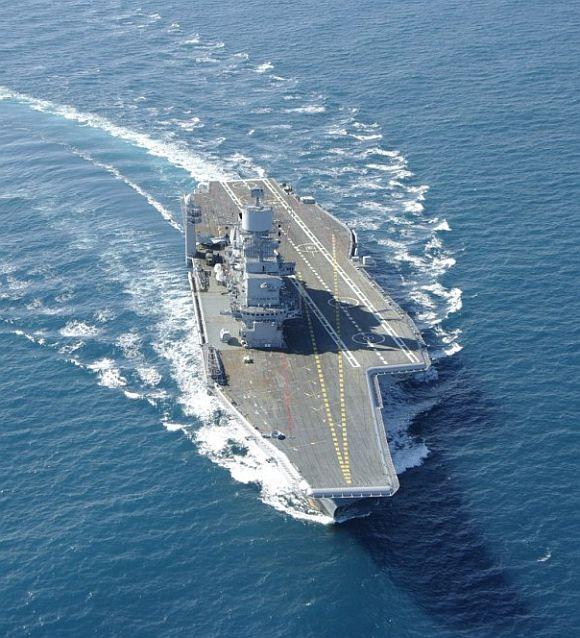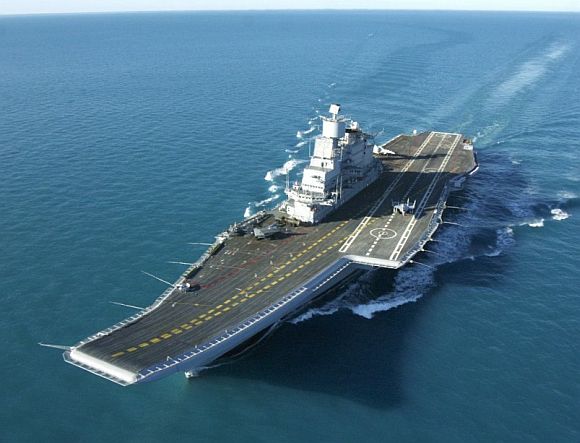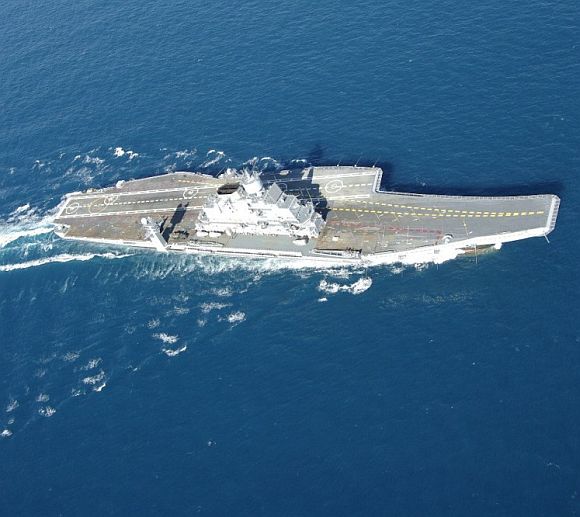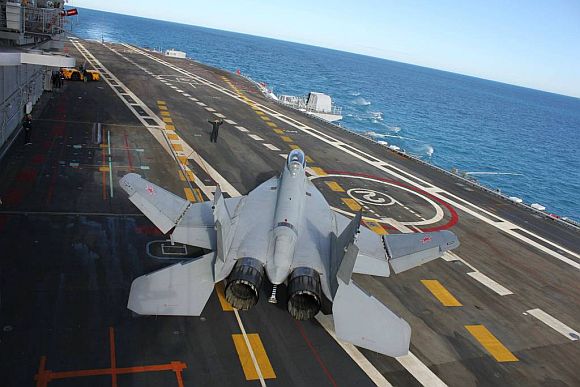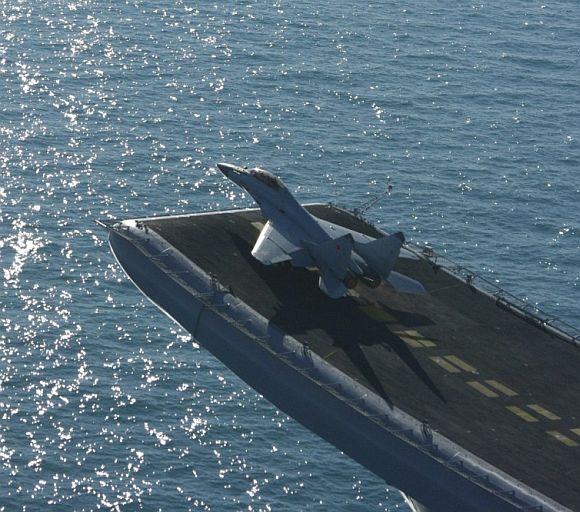 | « Back to article | Print this article |
INS Vikramaditya sets out for final sea trials
Russia has sent out aircraft carrier INS Vikramaditya for final sea trial in the White Sea before delivering it to India in early December.
A mixed Russian-Indian crew is on board the warship.
The Vikramaditya was originally built as the Soviet Project 1143.4 class aircraft carrier Admiral Gorshkov. The Admiral Gorshkov was built under the name of Baku and put to service in the Northern Fleet in 1987.
The Vikramaditya, which is already years past its original 2008 delivery date, was supposed to have been handed over on December 4, 2012, but sea trials in September revealed the ship's boilers were not fully functional.
The Vikramaditya then returned to the shipyard to fix the problems that were detected during the sea trials.
Click on NEXT to read further...
INS Vikramaditya sets out for final sea trials
The ship demonstrated excellent seaworthiness, speed of 27.9 knots (about 52 kilometres per hour) and manoeuvrability during the three-month sea trials.
The ship sailed for more than 12,000 miles, with 517 flights performed from its deck by aircraft and helicopters.
Click on NEXT to read further...
INS Vikramaditya sets out for final sea trials
Russia's Northern Fleet aviation was involved in the sea trials, aircraft and helicopters flew around and over the ship in order to check its radar, air defence, communication and control systems.
Under a package inter-governmental agreement signed in New Delhi in January 2004, the body of the Admiral Gorshkov was transferred to India for free, subject to its upgrading at Sevmash, a Russian shipbuilding company, and armament with Russian aircraft.
Click on NEXT to read further...
INS Vikramaditya sets out for final sea trials
Russia will also train the Indian crew of about 1,500 and create an infrastructure for the ship in the Indian Ocean.
India has already started taking delivery of MiG-29K naval fighter aircraft for the Vikramaditya.
Click on NEXT to read further...
INS Vikramaditya sets out for final sea trials
The overall cost of the contract was estimated at $1.5 billion (around Rs 8,170 crore), of which about $974 million (Rs 5,305 crore) were intended for the conversion of the ship into a full-scale aircraft carrier.
India is working on two more aircraft carriers, possibly of over 60,000 tonnes, and it will take some time to select the combat jet combination for them.
Click on NEXT to read further...
INS Vikramaditya sets out for final sea trials
Those two carriers should use slingshot propulsion by steam turbines rather than ski jumps, and of course, the standard three arrestor wires.
That technology will possibly have to come from the US carriers, where slingshot takeoffs are routine. Naval teams area already in touch with manufacturers as part of the learning process, after which RfPs should appropriately be issued.
Click on NEXT to go further...
Top PHOTO features of the week
Click on MORE to see another set of PHOTO features...
